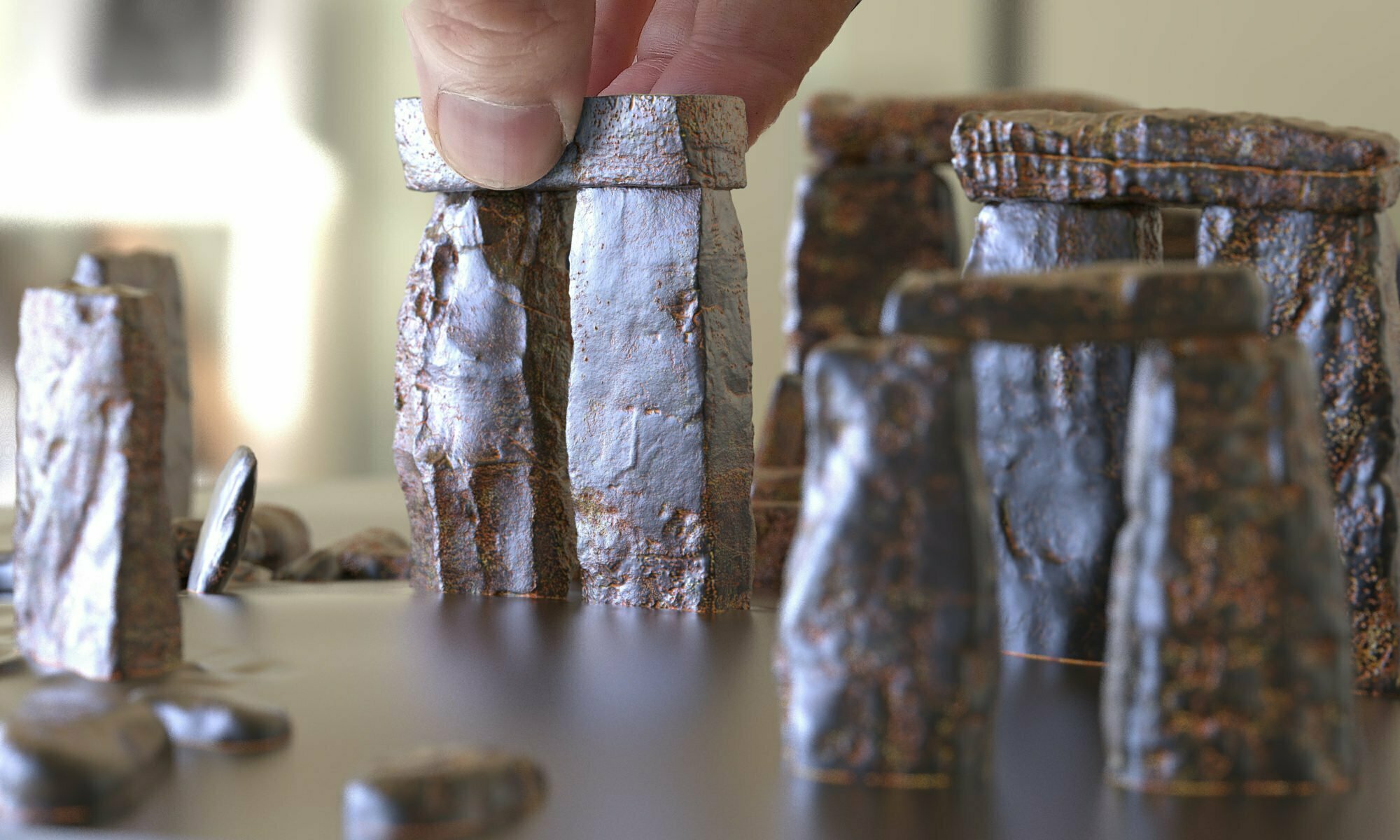Artworks of the rebuilt Trilithon Four
Sometimes referred to as The West Trilithon, it had fallen during a storm in 1797 and reassembled in 1958. But, during that time, some 161 years, the Victorians, in particular, pounded the corners and edges off the lintel. Those Victorians could buy hammers on the way in. Doubtless, some brought their own sledgehammers and wheelbarrows, too.Interesting gap and radioactivity
Between the uprights, there is a cleft in Stone 58, an obvious bedding plane, that extends to the outer edge face. During the works in 1958 it was x-rayed before it was re-erected, just in case it would cleave upon lifting. And it was decided, that three steel pins would be added, to hold it together, just in case. The pins were then hidden under the extracted cores that have capped the holes. You can see them in my pictures, inner and outer.
At solstices, when I see people placing their foreheads against these upright stones, in meditation and communion with the ancestors, I have to bite my tongue, so I don’t warn them of the toxic emissions. Of course, OTT and churlish. Still, if ever I was to make a glow in the dark trilithon, this would be it.
Sarsen has holes
The technical, geological word, is vuggy. From the Cornish word was vooga, which meant cave. Cavities or voids or vugs in this iron hard quartzite sandstone. Usually, they’re pencil tip small, but can be bigger; even following a quartz vein. Sometimes they’re filled with crystals, too. You have to wonder what those ancient people thought of the fossilized palm root cavities, too.
But, they can be a point of weakness to the weather. Our T4 has holes, some pointing up, as if catching the rain, some low down, as if mouse holes.
Distinguishing features
The outer right or SW lower side of Stone 57 lost an 8-foot chunk. (There are other huge percussive injuries throughout the monument.) But, as this face was laying flat on the ground when it when fell, it must have been removed prior to the fall in 1797. Not during the time of the builders, I think — the scar is too fresh.Interesting notch
In the gap, at about human eye level and about a third of the way up, is a double notch on Stone 58. By double, I mean that is, it is on both sides of the cleft. (There is a bigger, but single notch two thirds of the way up on the inside, but this looks more natural or happenstance.) I have seen some theories that it is a viewing point for observance of the moon at particular times of the lunar cycle. You’d look from the outer, to the edge of T2’s S53 and this would mark the Winter Solstice Sunrise. If this was added at the time of the original erection, or added much later, is unknown. This is all beyond my area of expertise, as the lines drawn on plans of Stonehenge can get… Overwhelming.
The only, absolute certainty is the Winter Solstice Sunset, observed from the Avenue, through the outer sarsen circle and the central T3 trilithon. Because of the arrangement of avenue and stones and the finer dressing of the outer circle’s stones along that view path.
Builders’ grooves
Through all the troubles and time it’s wonderful to see, plainly, there are still original builders’ marks. Most obviously on the inner gap face of Stone 57. Lateral (horizontal) and around 6 inches (15.24 cm) apart.



